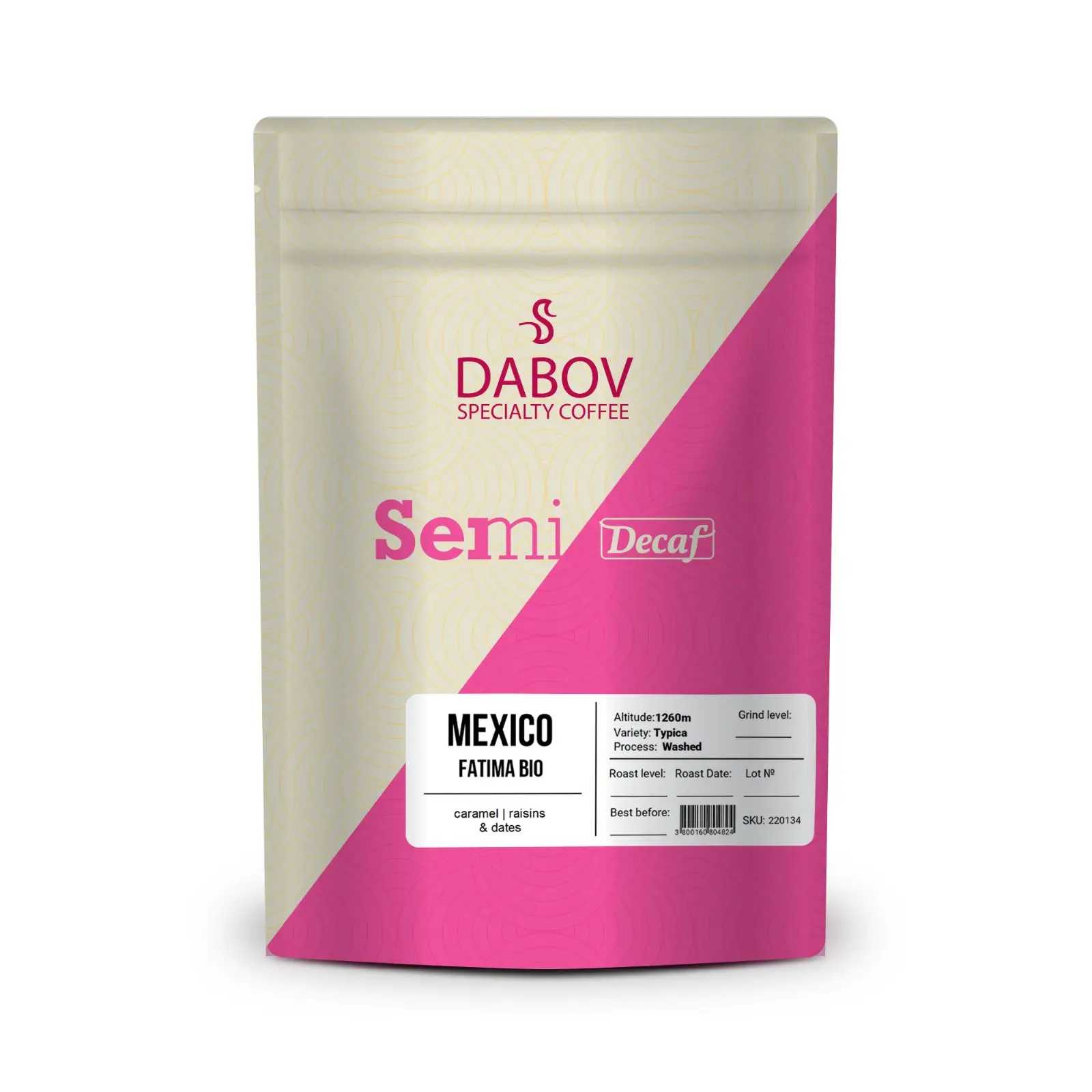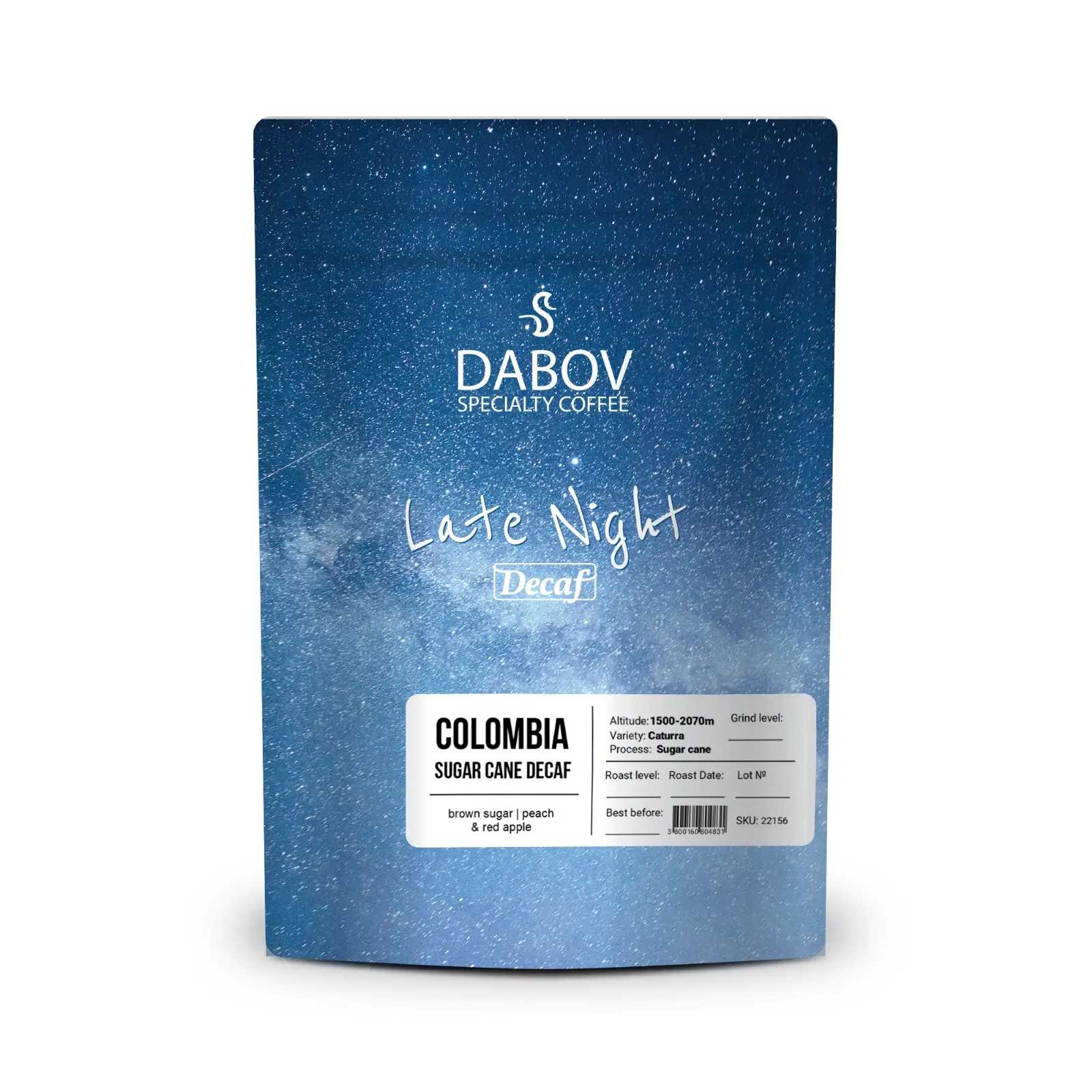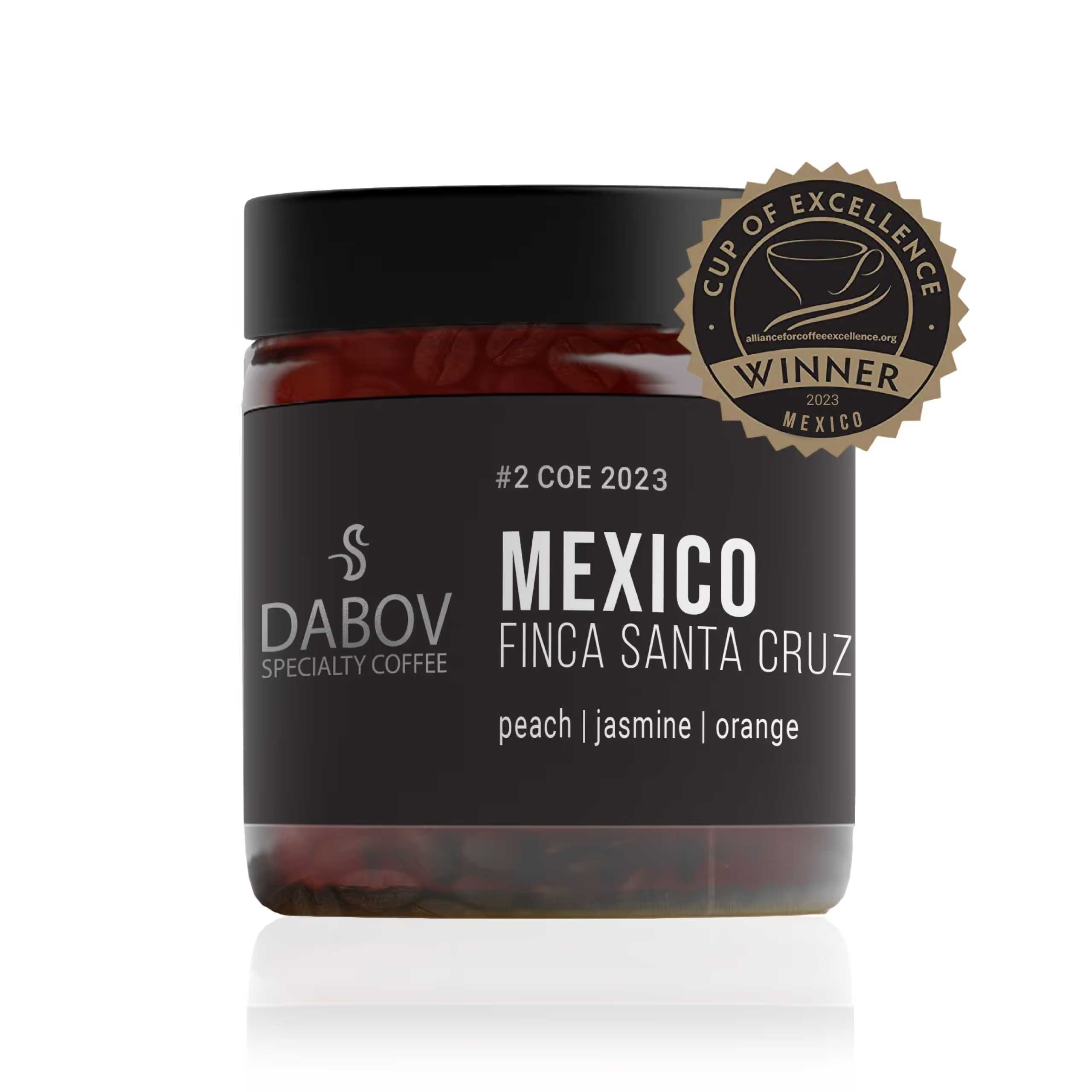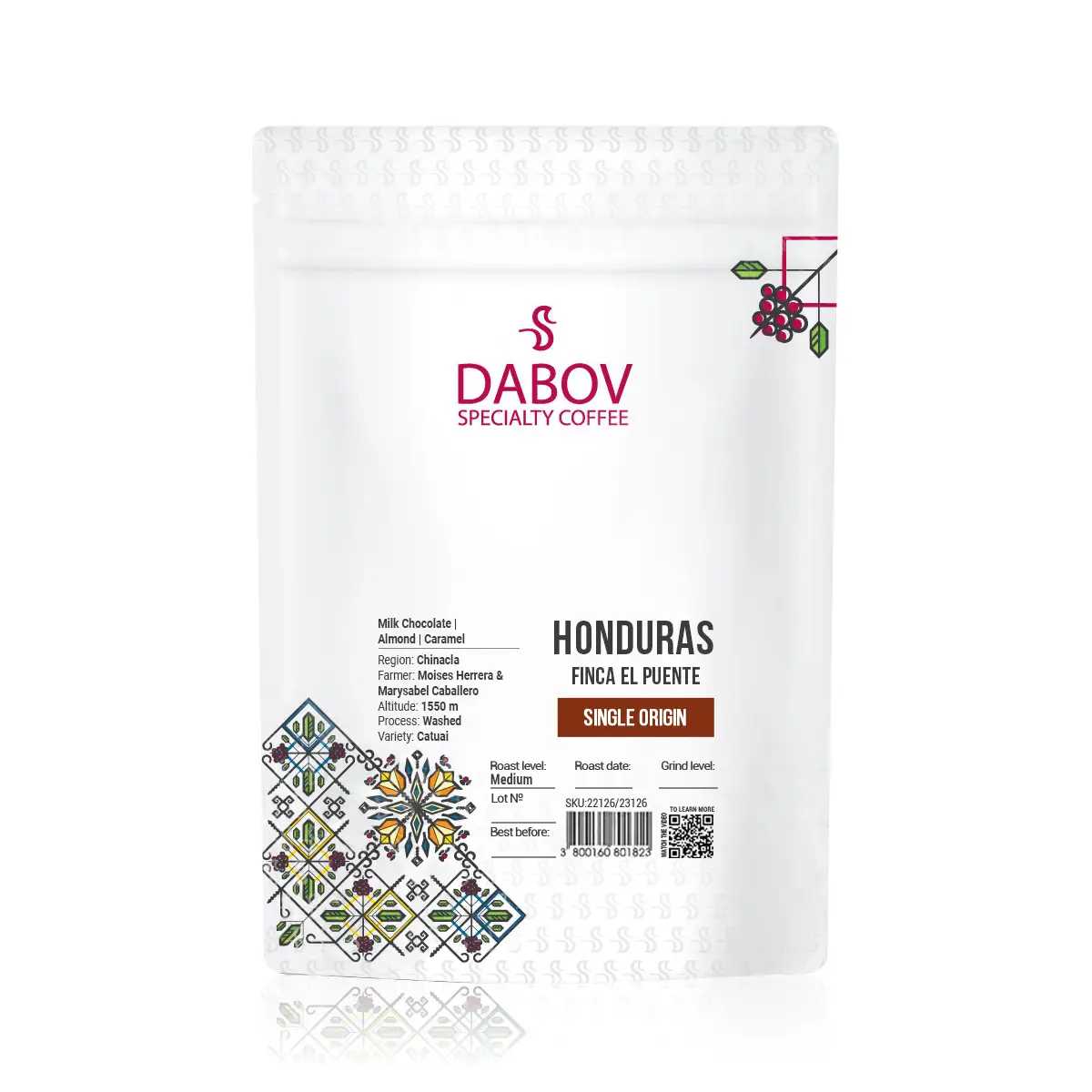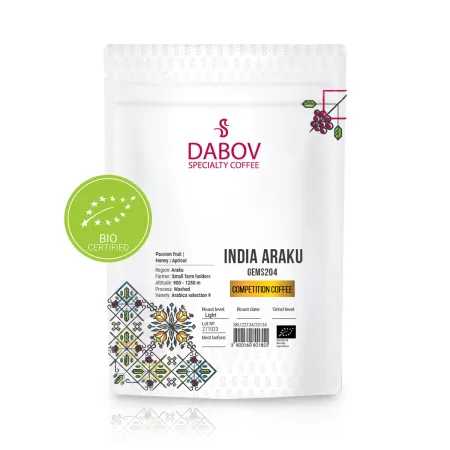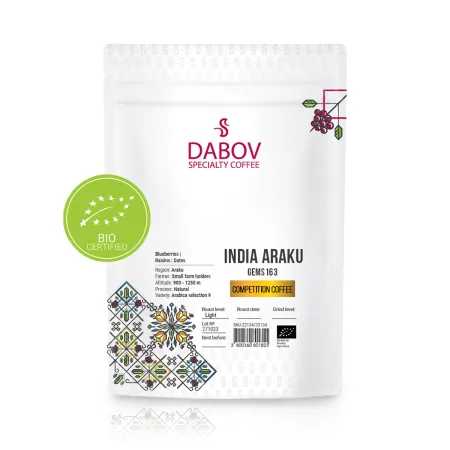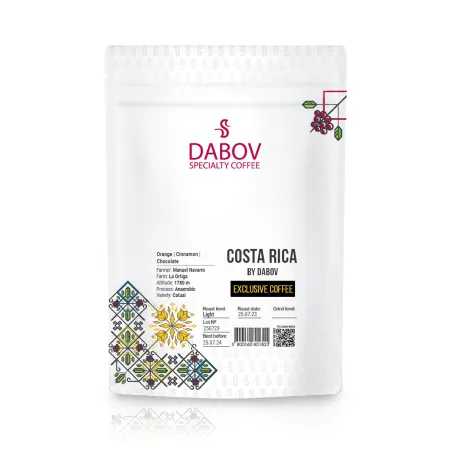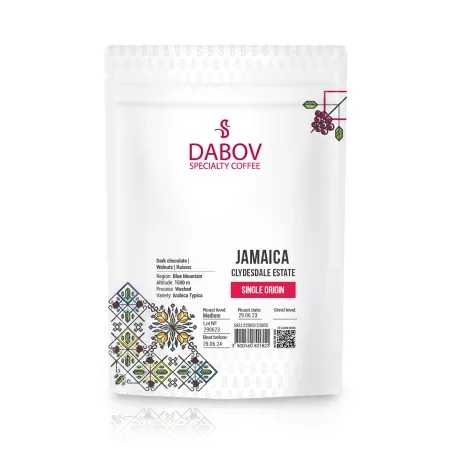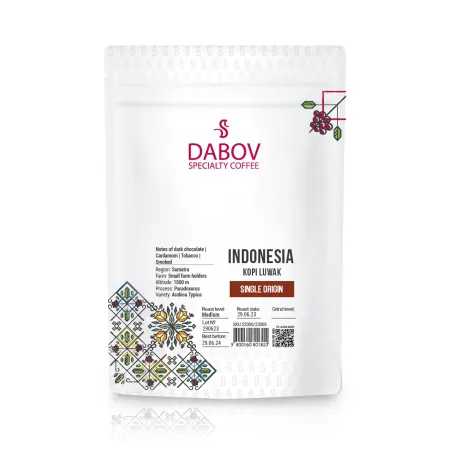Asian Coffee Varieties From Sumatra to Bali
Discover the rich diversity of Asian coffee varieties, from the celebrated Sumatra coffee to the enchanting Bali coffee. This guide delves into the unique flavors and growing practices that set Asian coffee apart in the global marketplace. Learn about the distinct taste profiles, brewing techniques, and the cultural significance of coffee cultivation in regions like Indonesia and Vietnam. We'll also explore sustainable practices in coffee farming and the rise of specialty coffee. So whether you're a seasoned barista or a casual coffee lover, this journey through the world of Asian coffee will inspire you to explore and appreciate each unique variety. Join us and awaken your palate!
Introduction
Coffee, the aromatic elixir that fuels millions worldwide, has a rich and diverse heritage in Asia. From the misty mountains of Sumatra to the volcanic slopes of Bali, Asian coffee varieties offer a tapestry of flavors that captivate the senses and challenge conventional coffee expectations. This comprehensive exploration delves into the heart of Asian coffee production, with a particular focus on the renowned regions of Sumatra and Bali. As we embark on this caffeinated journey, we'll uncover the unique characteristics that make Asian coffee a treasure trove for enthusiasts and connoisseurs alike.
The importance of Asian coffee in the global market cannot be overstated. With Indonesia ranking as the fourth-largest coffee producer worldwide and Vietnam leading in Robusta production, Asian coffee varieties have carved out a significant niche. The distinct flavor profiles emerging from these regions have not only attracted coffee aficionados but have also reshaped the landscape of specialty coffee. From the earthy, full-bodied notes of Sumatran beans to the bright, clean taste of Balinese varieties, Asian coffees offer a sensory experience that reflects the diverse terroirs and processing methods unique to this part of the world.
Section 1: Understanding Asian Coffee Varieties
1.1 What Makes Asian Coffee Unique?
The uniqueness of Asian coffee stems from a perfect storm of geographical, climatic, and cultural factors. The region's proximity to the equator provides ideal growing conditions, with high altitudes and volcanic soils contributing to the development of complex flavor profiles. In Indonesia alone, the archipelagic nature of the country results in microclimates that produce starkly different coffee characteristics from island to island.
The monsoon climate prevalent in many Asian coffee-growing regions plays a crucial role in flavor development. The alternating wet and dry seasons stress the coffee plants, leading to slower cherry maturation and more concentrated flavors. This natural process is further enhanced by traditional processing methods, such as the wet-hulling technique used in Sumatra, which imparts a distinctive earthy quality to the beans.
Moreover, the biodiversity of Asian coffee-growing regions contributes to unique flavor notes. Coffee plants often grow alongside spices, fruits, and hardwoods, which can influence the coffee's taste through cross-pollination and soil composition. This natural flavor infusion is one reason why Asian coffees often exhibit notes of spice, tropical fruit, and woody undertones that are less common in coffees from other parts of the world.
1.2 Key Regions for Asian Coffee Production
While our focus will be on Sumatra and Bali, it's essential to understand the broader context of Asian coffee production. Indonesia, as an archipelago of over 17,000 islands, offers a diverse range of coffee varieties. Beyond Sumatra and Bali, regions like Java, Sulawesi, and Flores each produce coffees with distinct characteristics.
Vietnam, the world's second-largest coffee producer, is renowned for its Robusta beans. The country's coffee industry, centered in the Central Highlands, has experienced rapid growth since the 1990s. Vietnamese coffee is known for its strong, bold flavor and is often used in espresso blends and instant coffee production.
India, another significant player in Asian coffee production, boasts a long history of cultivation dating back to the 16th century. The country produces both Arabica and Robusta varieties, with key growing regions including Karnataka, Kerala, and Tamil Nadu. Indian coffee is celebrated for its mild, low-acidity profile and often exhibits spicy or nutty notes.
Other notable Asian coffee-producing countries include Thailand, with its burgeoning specialty coffee scene in the northern regions, and the Philippines, where coffee has been cultivated since the 18th century. Each of these regions contributes to the rich tapestry of Asian coffee varieties, offering a diverse range of flavors and experiences for coffee lovers to explore.
Section 2: Sumatra Coffee
2.1 Overview of Sumatra Coffee
Sumatra, the largest island entirely within Indonesia, has a coffee history dating back to the late 17th century when Dutch colonists first introduced the crop. The island's equatorial climate, high altitudes, and volcanic soil create ideal conditions for coffee cultivation. Sumatran coffee quickly gained recognition for its unique flavor profile, becoming a staple in the global coffee trade.
The development of Sumatran coffee is intrinsically linked to the island's complex history. Colonial influences, local farming practices, and the evolution of processing techniques have all played a role in shaping the distinctive character of Sumatran beans. Today, coffee remains a vital part of Sumatra's economy and cultural identity, with smallholder farmers producing the majority of the crop.
Exportation of Sumatran coffee involves a network of collectors and processors who aggregate beans from various small farms. This system, while sometimes criticized for its complexity, allows for the preservation of traditional farming methods and contributes to the unique flavor profile that Sumatran coffee is known for. The beans typically undergo a wet-hulling process, known locally as "Giling Basah," which is largely responsible for the coffee's signature earthy notes and full body.
2.2 Flavor Profile and Characteristics
Sumatran coffee is renowned for its bold, complex flavor profile that sets it apart from other origins. The taste is often described as earthy, herbaceous, and full-bodied, with a smooth, almost creamy mouthfeel. Tasting notes frequently include hints of dark chocolate, cedar, tobacco, and a subtle spiciness that lingers on the palate.
The body of Sumatran coffee is typically heavy and syrupy, coating the mouth and providing a lasting impression. This characteristic is largely attributed to the wet-hulling process, which reduces acidity and enhances the coffee's natural oils. The acidity in Sumatran coffee is generally low to medium, contributing to its smooth drinking experience.
One of the most distinctive aspects of Sumatran coffee is its earthy quality, often described as mossy or forest-like. This unique flavor component is a result of both the terroir and the processing method. The wet-hulling process, which exposes the beans to the elements during drying, allows them to absorb ambient flavors from the environment.
Color is another notable characteristic of Sumatran beans. Due to the wet-hulling process, the beans often have a dark bluish-green hue before roasting, which transforms into a deep, dark brown when roasted. This color is indicative of the coffee's rich, intense flavor profile.
2.3 Coffee Growing Regions within Sumatra
2.3.1 Mandheling Coffee
Mandheling coffee, named after the Mandailing people of North Sumatra, is one of the most famous varieties from the island. Grown in the highlands around Lake Toba, Mandheling coffee is cultivated at elevations ranging from 2,000 to 5,000 feet above sea level. The volcanic soil in this region imparts a unique mineral content to the beans, contributing to their complex flavor profile.
Mandheling coffee is celebrated for its full body, low acidity, and complex flavor notes. Tasting profiles often include descriptions of earthy, woody, and spicy notes, with hints of brown sugar and dried fruit. The beans are typically medium to dark roasted to enhance their bold characteristics.
The popularity of Mandheling coffee stems from its consistency and depth of flavor. It's a favorite among those who prefer a strong, robust cup with minimal bitterness. The beans are often used in espresso blends due to their ability to cut through milk, making them ideal for lattes and cappuccinos.
2.3.2 Lintong Coffee
Lintong coffee, grown in the Lintongnihuta region south of Lake Toba, is another highly regarded Sumatran variety. The coffee is cultivated at elevations between 3,000 and 5,000 feet, in an area known for its rich, volcanic soil and ideal microclimate for coffee production.
What makes Lintong unique is its clean, bright flavor profile, which sets it apart from the typically earthy Sumatran coffees. Lintong beans often exhibit a more pronounced acidity than other Sumatran varieties, with tasting notes that include citrus, floral hints, and a sweet, tobacco-like finish.
The processing of Lintong coffee involves a variation of the wet-hulling method that results in a cleaner taste. Farmers in the region have developed techniques to control fermentation and drying more precisely, leading to a more consistent product. This attention to detail in processing has contributed to Lintong's reputation as a premium Sumatran coffee.
2.4 Brewing Techniques for Sumatra Coffee
To fully appreciate the unique characteristics of Sumatran coffee, certain brewing methods are particularly effective. The French press is an excellent choice for bringing out the full body and rich flavors of Sumatran beans. The immersion brewing process allows for full extraction of oils and flavors, resulting in a cup that showcases the coffee's earthy notes and syrupy body.
For those who prefer a cleaner cup, the pour-over method can also yield excellent results with Sumatran coffee. Using a medium-coarse grind and a slower pour rate can help balance the coffee's intensity while still allowing its complex flavors to shine through. Experimenting with water temperature and brew time can help fine-tune the extraction to personal taste preferences.
Cold brew is another method that works well with Sumatran coffee. The long steeping process in cold water brings out the coffee's natural sweetness and reduces perceived acidity, resulting in a smooth, full-flavored concentrate that can be enjoyed over ice or mixed with milk.
Regardless of the brewing method chosen, it's important to start with freshly roasted beans and grind them just before brewing to ensure the best possible flavor. Sumatran coffee's unique characteristics make it a versatile choice for various brewing techniques, allowing coffee enthusiasts to explore different facets of its complex flavor profile.
Section 3: Bali Coffee
3.1 Introduction to Bali Coffee
Bali, an island paradise known for its lush landscapes and vibrant culture, has a coffee history that is equally rich and fascinating. Coffee cultivation in Bali dates back to the early 19th century when Dutch colonists introduced the crop to the island. Today, coffee plays a significant role in Bali's agricultural sector and cultural identity, with many small-scale farmers continuing traditional cultivation methods passed down through generations.
The importance of coffee to Bali's local culture and economy cannot be overstated. Coffee ceremonies are an integral part of Balinese social life, and the crop provides a vital source of income for many rural communities. In recent years, there has been a growing focus on sustainable and organic coffee production in Bali, aligning with the island's emphasis on eco-tourism and environmental conservation.
Balinese coffee production is centered primarily in the island's central highlands, particularly in the Kintamani region. The volcanic soil, high altitude, and unique microclimate of this area contribute to the distinctive flavor profile of Bali coffee. Unlike the wet-hulling process common in Sumatra, Bali coffee is typically fully washed, resulting in a cleaner, brighter cup profile.
3.2 Flavor Profile and Characteristics
Bali coffee is known for its clean, bright flavor profile that stands in contrast to the earthy, full-bodied characteristics of Sumatran varieties. The taste is often described as well-balanced, with medium body and acidity. Flavor notes commonly associated with Bali coffee include citrus, chocolate, and subtle floral hints.
The aroma of Bali coffee is typically sweet and fragrant, with some varieties exhibiting a slight fruitiness reminiscent of tropical fruits native to the island. This aromatic quality is often attributed to the shade-grown cultivation practices common in Bali, where coffee plants are interspersed with fruit trees and other crops.
In terms of body, Bali coffee tends to be lighter and more delicate than its Sumatran counterparts. The mouthfeel is often described as silky or smooth, with a pleasant, lingering aftertaste. The acidity in Bali coffee is generally more pronounced than in Sumatran varieties, contributing to its bright, clean flavor profile.
Color-wise, Bali coffee beans tend to have a more uniform appearance compared to wet-hulled Sumatran beans. When roasted, they develop a rich brown color, often with a slight sheen due to their natural oils. This visual characteristic is indicative of the coffee's balanced flavor and smooth drinking experience.
3.3 Coffee Growing Regions in Bali
3.3.1 Kintamani Coffee
Kintamani coffee, grown in the highlands of northeastern Bali, is the island's most renowned coffee variety. The region, which includes the slopes of Mount Batur, an active volcano, provides ideal growing conditions for high-quality Arabica coffee. Elevations in the Kintamani region range from 3,000 to 5,000 feet above sea level, contributing to the slow maturation of coffee cherries and the development of complex flavors.
What makes Kintamani coffee unique is its terroir-driven flavor profile. The volcanic soil, rich in minerals and organic matter, imparts a distinct taste to the beans. Additionally, the region's microclimate, characterized by cool temperatures and consistent rainfall, creates optimal conditions for coffee cultivation.
Kintamani coffee is typically wet-processed, which helps to highlight its bright, clean flavor profile. Tasting notes often include descriptions of citrus fruits, particularly lemon or orange, along with hints of chocolate and a subtle, sweet finish. The coffee's medium body and balanced acidity make it a versatile choice for various brewing methods.
In 2008, Kintamani coffee received a Geographical Indication (GI) status, recognizing its unique characteristics tied to its place of origin. This designation has helped to protect the authenticity of Kintamani coffee and promote its reputation in the global specialty coffee market.
3.4 Brewing Techniques for Bali Coffee
To fully appreciate the nuanced flavors of Bali coffee, certain brewing methods are particularly effective. Pour-over brewing, using methods such as the Hario V60 or Chemex, can highlight the coffee's bright, clean profile. These methods allow for precise control over water temperature and flow rate, enabling the extraction of delicate flavor notes without over-extraction.
For those who prefer a fuller-bodied cup, the AeroPress is an excellent choice for brewing Bali coffee. This method combines immersion and pressure brewing, resulting in a rich, smooth cup that brings out the coffee's chocolate notes while preserving its bright acidity.
Cold brew is another method well-suited to Bali coffee, particularly during hot weather. The slow extraction process in cold water emphasizes the coffee's natural sweetness and subtle fruity notes, creating a refreshing and smooth concentrate that can be enjoyed over ice.
Espresso enthusiasts will find that Bali coffee can produce excellent shots with a balanced flavor profile. When dialed in correctly, espresso made with Bali beans often exhibits a sweet, caramel-like crema and a bright, clean finish.
Regardless of the brewing method chosen, it's crucial to use freshly roasted beans and grind them just before brewing to ensure optimal flavor. Experimenting with different grind sizes, water temperatures, and brewing times can help coffee lovers discover the perfect balance that showcases the unique characteristics of Bali coffee.
Section 4: Comparing Sumatra and Bali Coffee
4.1 Flavor Differences
The contrast between Sumatra and Bali coffee offers a fascinating study in how geography, climate, and processing methods can influence coffee flavor. Sumatran coffee is renowned for its earthy, full-bodied profile with low acidity and notes of dark chocolate, cedar, and spice. This robust flavor is largely attributed to the wet-hulling process and the unique terroir of Sumatra's coffee-growing regions.
Bali coffee, on the other hand, presents a brighter, cleaner cup with medium body and acidity. Its flavor profile often includes citrus notes, hints of chocolate, and subtle floral undertones. The wet processing method commonly used in Bali contributes to this cleaner taste, allowing the coffee's inherent flavors to shine through more clearly.
These differences in flavor profile cater to diverse consumer preferences. Coffee drinkers who enjoy a bold, intense cup often gravitate towards Sumatran varieties, while those who prefer a more nuanced, bright flavor may find Bali coffee more to their liking. Many coffee blends incorporate both Sumatran and Bali beans to achieve a balanced flavor profile that combines depth and brightness.
4.2 Cultivation and Processing Methods
The cultivation practices in Sumatra and Bali, while sharing some similarities due to their Indonesian heritage, have distinct characteristics that influence the final product. In Sumatra, coffee is often grown in diverse agroforestry systems, where coffee plants are interspersed with other crops and native trees. This approach contributes to the complex flavor profile of Sumatran coffee and supports biodiversity.
Bali's coffee cultivation, particularly in the Kintamani region, tends to be more focused on specialty coffee production. Many farms in Bali have adopted organic and sustainable farming practices, aligning with the island's eco-friendly ethos. The volcanic soil and high-altitude growing conditions in Bali contribute to the coffee's unique flavor characteristics.
Processing methods play a crucial role in differentiating Sumatran and Bali coffee. The wet-hulling process used in Sumatra involves removing the parchment layer from the beans while they still have a high moisture content. This method, unique to Indonesia, results in the distinctive earthy flavors and full body associated with Sumatran coffee.
In contrast, Bali coffee is typically fully washed, a process that involves fermenting the coffee cherries to remove the pulp before drying. This method results in a cleaner taste and allows for more of the coffee's inherent flavors to come through. The difference in processing methods is a key factor in the contrasting flavor profiles of Sumatran and Bali coffee.
Section 5: Other Notable Asian Coffee Varieties
5.1 Vietnam Coffee
Vietnam has emerged as a coffee powerhouse, ranking as the world's second-largest coffee producer. The country's coffee industry, centered in the Central Highlands region, primarily focuses on Robusta production, accounting for about 97% of Vietnam's total coffee output. However, there is a growing interest in Arabica cultivation, particularly in the northern mountainous areas.
Vietnamese coffee is known for its strong, bold flavor profile. The Robusta beans produced in Vietnam are characterized by their high caffeine content and intense, sometimes bitter taste. These beans are often used in espresso blends and instant coffee production due to their robust flavor and ability to cut through milk.
A unique aspect of Vietnamese coffee culture is the traditional preparation method using a phin filter. This small metal filter sits atop a cup, allowing hot water to slowly drip through ground coffee, resulting in a strong, concentrated brew. This coffee is often served with sweetened condensed milk, creating the popular cà phê sữa đá (iced milk coffee).
In recent years, there has been a growing specialty coffee scene in Vietnam, with an increasing focus on high-quality Arabica production. Regions like Da Lat are gaining recognition for producing specialty-grade Arabica beans with flavor profiles that include notes of chocolate, nuts, and caramel.
5.2 Indian Coffee Varieties
India has a rich coffee heritage dating back to the 16th century when coffee was first introduced to the country. Today, India is known for producing both Arabica and Robusta varieties, with key growing regions including Karnataka, Kerala, and Tamil Nadu.
Indian coffee is celebrated for its mild flavor and low acidity. The beans are often described as having a subtle spiciness, which is attributed to the practice of intercropping coffee with spices like cardamom and cinnamon. This unique growing environment contributes to the distinct flavor profile of Indian coffee.
Some notable Indian coffee varieties include:
- Monsooned Malabar: This unique coffee undergoes a special processing method that mimics the conditions coffee beans were exposed to during long sea voyages in the past. The result is a low-acid coffee with a distinctive earthy, spicy flavor and a heavy body.
- Mysore Nuggets: Grown in the Bababudan Hills of Karnataka, these Arabica beans are known for their mild, smooth flavor with notes of spice and subtle fruitiness.
- Coorg Coffee: Produced in the Kodagu district of Karnataka, Coorg coffee is renowned for its balanced flavor profile, often exhibiting notes of chocolate and subtle spices.
When brewing Indian coffee, methods that highlight its smooth, mild characteristics are often preferred. Pour-over brewing can bring out the coffee's subtle spice notes, while French press can enhance its body and richness. For those who enjoy milk-based coffee drinks, Indian coffee's ability to blend well with milk makes it an excellent choice for lattes and cappuccinos.
Section 6: The Future of Asian Coffee
6.1 Sustainability and Coffee Farming
The future of Asian coffee is inextricably linked to sustainable farming practices. As climate change poses increasing challenges to coffee production worldwide, many Asian coffee-growing regions are at the forefront of adopting sustainable and climate-resilient farming methods.
In Indonesia, including Sumatra and Bali, there is a growing emphasis on agroforestry systems that integrate coffee cultivation with native tree species. This approach not only helps to mitigate the effects of climate change but also supports biodiversity and provides additional income streams for farmers through crop diversification.
Organic certification is gaining traction across Asian coffee-producing countries. In India, for example, the number of organic coffee farms has been steadily increasing, driven by both environmental concerns and market demand for sustainably produced coffee. Similarly, in Vietnam, there are initiatives to promote more sustainable Robusta production, including water conservation techniques and reduced pesticide use.
Ethical certifications, such as Fair Trade and Rainforest Alliance, are also playing an increasingly important role in Asian coffee production. These certifications ensure better working conditions and fair compensation for coffee farmers while promoting environmentally friendly farming practices.
6.2 The Rise of Specialty Coffee in Asia
The specialty coffee movement has taken root in many Asian countries, transforming both production and consumption patterns. In traditional coffee-producing countries like Indonesia and Vietnam, there is a growing focus on improving coffee quality to meet the demands of the specialty market.
In Bali, for instance, many farmers are shifting towards single-origin, high-quality Arabica production, often employing innovative processing methods to create unique flavor profiles. This trend is mirrored in other parts of Indonesia, where regions like Flores and Sulawesi are gaining recognition for their distinctive specialty coffees.
The rise of specialty coffee is not limited to producing countries. Major Asian cities like Tokyo, Seoul, and Singapore have vibrant café cultures that rival those of traditional coffee capitals. This growing domestic appreciation for high-quality coffee is driving demand for better beans and more sophisticated brewing methods.
In countries not traditionally associated with coffee production, such as China and Thailand, there are emerging specialty coffee scenes. Yunnan province in China, for example, is producing increasingly high-quality Arabica beans that are gaining international recognition.
This shift towards specialty coffee is having a ripple effect throughout the Asian coffee industry. It's encouraging more sustainable and quality-focused farming practices, creating new economic opportunities for smallholder farmers, and fostering a deeper appreciation for the complexity and diversity of Asian coffee varieties.
Conclusion
The journey through Asian coffee varieties, from the earthy depths of Sumatra to the bright notes of Bali, reveals a world of flavor that is as diverse as it is captivating. Each region we've explored offers a unique expression of terroir, processing methods, and cultural traditions, contributing to a rich tapestry of coffee experiences.
Sumatran coffee, with its full body and complex, earthy profile, stands as a bold testament to the power of traditional processing methods and unique growing conditions. The wet-hulling process, combined with the region's volcanic soils and humid climate, creates a cup that is instantly recognizable and deeply satisfying to those who appreciate its intense character.
In contrast, Bali coffee showcases the brighter, cleaner side of Indonesian coffee production. Its citrusy notes and smooth body offer a different but equally compelling coffee experience, reflecting the island's distinct terroir and more modern processing approach.
Beyond Indonesia, we've touched on the robust flavors of Vietnamese coffee, the spice-infused notes of Indian varieties, and the emerging specialty scenes across Asia. Each of these adds another layer to our understanding of the vast potential and diversity within Asian coffee production.
As we look to the future, the Asian coffee industry stands at an exciting crossroads. The growing emphasis on sustainability and the rise of specialty coffee are driving innovation and quality improvements across the region. From the adoption of climate-resilient farming practices to the exploration of new processing methods, Asian coffee producers are positioning themselves at the forefront of the global coffee industry.
For coffee enthusiasts, this means an ever-expanding world of flavors to explore. Whether you're drawn to the bold, earthy notes of a Sumatran Mandheling or the bright, clean profile of a Balinese Kintamani, Asian coffee varieties offer something for every palate.
We encourage you to embark on your own journey of discovery through the world of Asian coffee. Experiment with different brewing methods, seek out single-origin beans from specific regions, and take the time to appreciate the unique stories and traditions behind each cup. In doing so, you'll not only expand your coffee horizons but also support the hardworking farmers and communities that make these exceptional coffees possible.
The world of Asian coffee is vast, diverse, and continually evolving. As you explore its many facets, you'll find that each cup offers not just a beverage, but a window into the landscapes, cultures, and innovations that make Asian coffee truly special. So raise your mug to the rich traditions and exciting future of Asian coffee – a world of flavor awaits!



